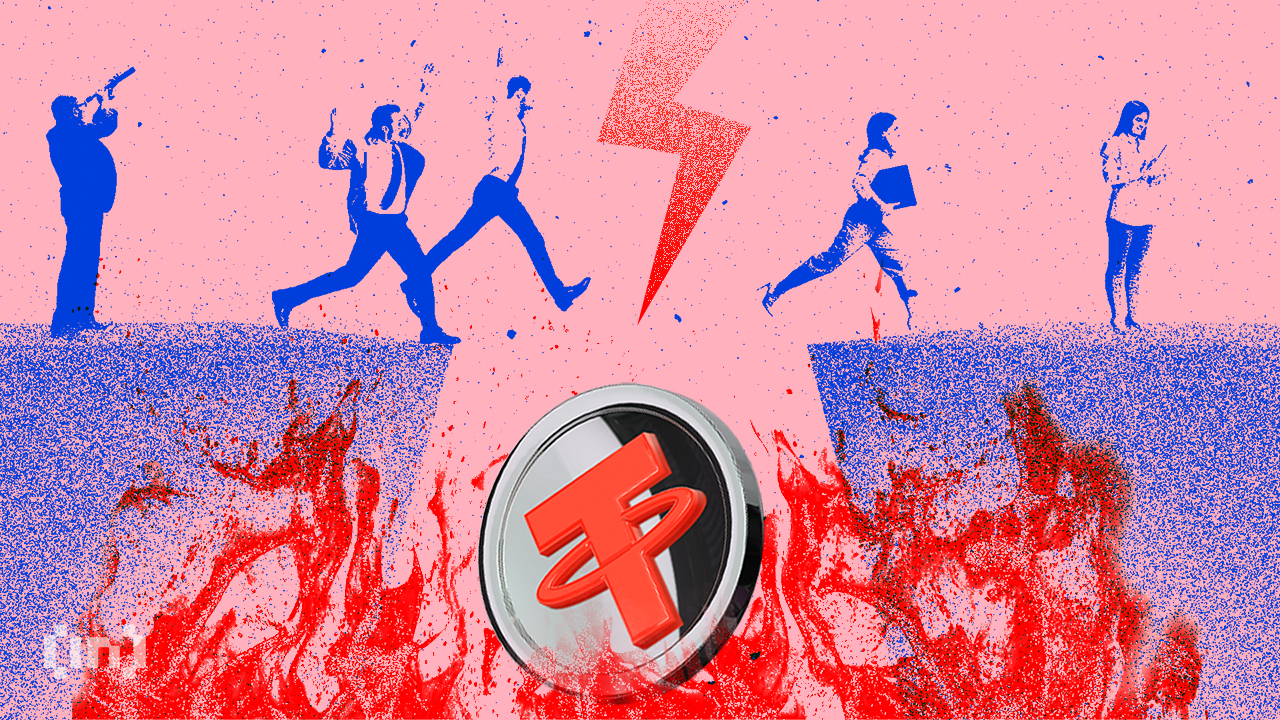
One former Securities and Exchange Commission (SEC) official has denounced Tether in the strongest terms and has asked regulators to ban the cryptocurrency.
On Tuesday, a former SEC official attacked Tether USDT and asked US regulators to ban the stablecoin, calling it a “mammoth house of cards.” John Reed Stark, a former chief of the SEC’s office of Internet Enforcement, with 18 years in the agency’s Enforcement Division, believes the stablecoin could be the “next domino to fall.”
The End of the Tether?
In a May 9 Twitter thread, Stark drew attention to Tether’s reserves, which he said were “unaudited, unconfirmed and therefore dubious.” He also claimed stablecoins like Tether faced “no regulatory constraints” for auditing or reporting.
This, he said, left “Tether’s customers to grapple with Tether’s remarkably condescending and ineffective public relations blather, hype and bluster.”
Stark emphasized the lack of trust in Tether’s reporting, as the firm only provides attestations and not a full audit. Audits, unlike attestations, thoroughly examine financial statements to identify risks, ensure integrity and accuracy, and provide a higher level of assurance.
Attestations, on the other hand, confirm specific information at a moment in time without conducting an in-depth analysis of risks and controls.
Stark continued:
“Under any circumstance, an attestation is not the same thing as an audit — and this kind of ‘unverified snapshot’ would never pass any sort of regulatory muster.”
Legally, Tether does not even have to submit attestations. Although, Tether has been promising a proper audit for nearly six years now. In July 2021, Tether’s General Counsel, Stuart Hoegner, promised a full audit in “months, not years.”
Tether’s CTO responded on May 10 with a link to its most recent attestation report. But it appeared to address none of Stark’s concerns.
Can You Trust Tether’s Reserves?
Tether claims its tokens are pegged at 1-to-1 with a matching fiat currency and backed 100% by reserves.
Financial reserves are vital for stablecoins. They provide stability and trust by backing each unit with real-world assets. A stable reserve helps ensure confidence and a consistent value.
When reserves come under threat, the stablecoin can depeg (or lose its 1-to-1 value with the original fiat currency). In March, during the height of the spring banking crisis, USDC, another stablecoin, dropped to as low as $0.88.
Shortly after Circle, the issuer of USD Coin (USDC), disclosed its inability to withdraw $3.3 billion from its $40 billion reserves held at Silicon Valley Bank (SVB), the stablecoin experienced a sell-off that drove its price below the $1 peg.
Last month, the US House Financial Services Committee released a draft of a far-reaching stablecoin bill. It proposes a temporary ban on stablecoins backed by cryptocurrencies.
Disclaimer
In adherence to the Trust Project guidelines, BeInCrypto is committed to unbiased, transparent reporting. This news article aims to provide accurate, timely information. However, readers are advised to verify facts independently and consult with a professional before making any decisions based on this content.
Source: https://beincrypto.com/mammoth-house-of-cards-tether/